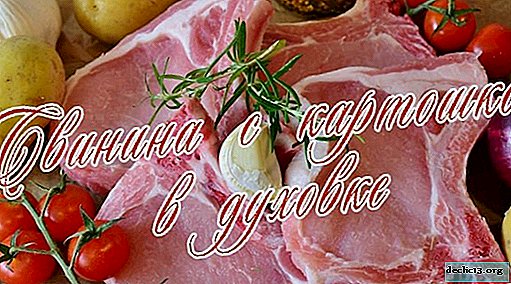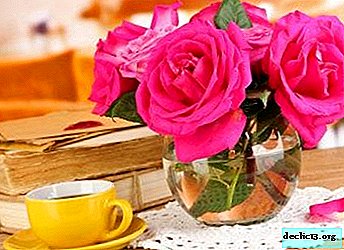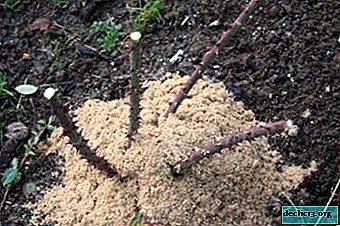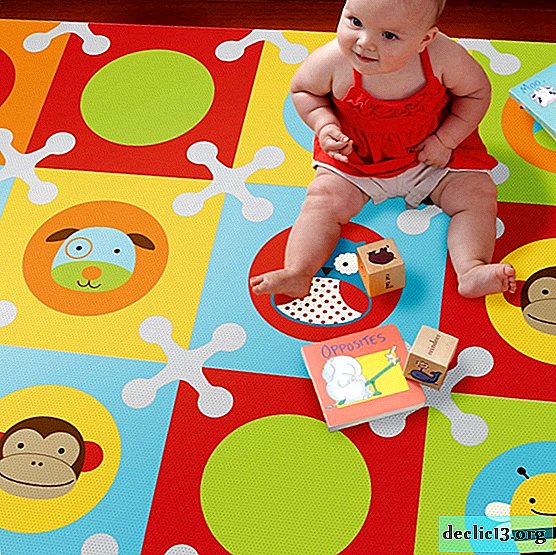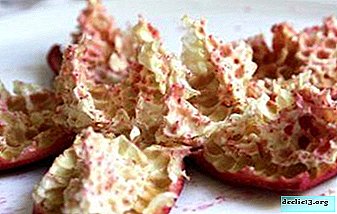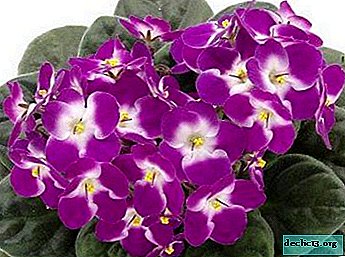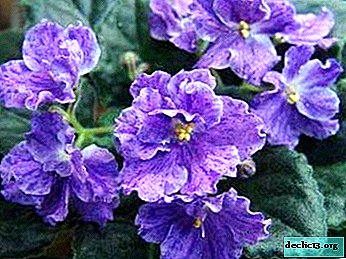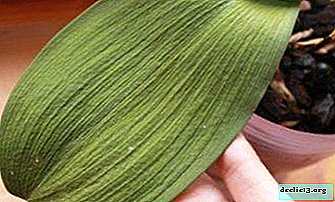Popular types of home creeper of Hoya macrophyll: how to grow and how to care?
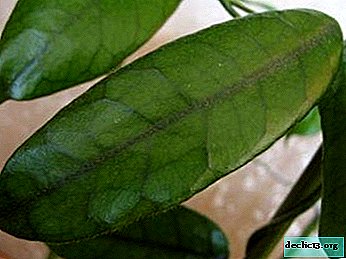
Disgusted at home, and there is no desire to rearrange cabinets and hang pictures? To solve this problem will help a large domestic flower. It will take up enough space, bring exotic to the room and fill the lungs with fresh air.
Highly appreciated by lovers of indoor plants, Hoya macrophyll. Powerful, in need of strong support, with large sinewy leaves, a weaving vine, striking in its unusual beauty and variety of color of leaves.
What is the secret of this plant, later in the article.
Description
Hoya macrophylla (Hoya macrophylla) or large-leaved Hoya - in 1826, Dr. Carl Blume, while traveling around Indonesia and on the island of Java, discovered a plant corresponding to the genus Hoya. The found plant was called Hoya macrophylla Blume or large-leaved Hoya.
Large-leaved hoya is a vine. It grows, braiding with its shoots any vertical pillar. At home, a metal rod can serve as such a vertical. The leaves of Hoya macrophylla are large, smooth with visible veins. The sheet length can reach 15-24 centimeters, and the width of 4-11 centimeters.
The leaf shape is oval, the tips of the leaves are pointed. In addition, it is worth noting that outwardly Hoya is amazingly beautiful. Large dark green, fleshy sheets eventually acquire yellow strokes along the edges or in the middle, which colors Hoya with a palette with a wondrous eye-pleasing palette.
Macrophyll blooms with a spherical umbrella formed by inflorescences. Inflorescences are held on pedicels of violet color from 2 to 8 centimeters long. The corolla of the inflorescence is a five-pointed star of pale pink color, and the petals of soft forms and beige color.Popular views
Hoya has a ramified population. Here, for example, are some of the most popular species.
Albomarginata
Fast-growing hoya, its creepers are thin and externally, the flower is similar to herbaceous climbing plants.
Pot of gold
Classical representative of the genus Hoya macrophylla. A characteristic feature is a more intense staining of dark green leaves in yellow. Thus, a golden spot occupies the center of the sheet and leaves only a small green border at the edge of the sheet.

Variegata or large leaf multicolor
A characteristic feature of macrophylla variegata is the redness of the leaves in the central part. Initially, the leaf is green, with time it turns yellow, and then turns red. The reddened center of the leaf turns part of the yellowness into a pale green color, but retains a green frame.

Splash
This Hoya differs from other species in the specificity of its color. The leaves remained large and green, but received a pale "sprinkling". It seems that the leaves are splashed with milk, through the drops of which a fleshy green leaf is pale seen. Read more about the Splash variety and other varieties of the Hoya Publishalis variety in a separate article.

Bai bur
A species with not very large leaves. Yellowing of the leaves appears in stripes or along the veins. Thus, the sheet seems to be pierced by neat golden stripes.

Growing
Seeds
 Growing Hoya from seeds is an extremely difficult task. The fact is that macrophyllus rarely releases seeds. For successful germination you will need:
Growing Hoya from seeds is an extremely difficult task. The fact is that macrophyllus rarely releases seeds. For successful germination you will need:
- Well permeable soil. For better quality, crushed sphagnum moss can be added to the soil.
- Keep the seed container in a well-lit place.
- It is necessary to maintain moderate soil moisture! It is important!
- DO NOT use fertilizer.
- After 3 months of maintenance, transplant Hoya with soil into a new pot. At this point, the plant should already have several leaves and a healthy shoot. Under good conditions, Hoya sprouts in about 7 days.
Leaves
 The leaf must be planted in a light, loose ground mixture with the petiole down at an angle of 450. The main difficulty with this method of reproduction is to stimulate the development of the root system and escape from the leaf. For this purpose, adenine sulfate, kinetin, or gibberelinic acid can be used.
The leaf must be planted in a light, loose ground mixture with the petiole down at an angle of 450. The main difficulty with this method of reproduction is to stimulate the development of the root system and escape from the leaf. For this purpose, adenine sulfate, kinetin, or gibberelinic acid can be used.
Their use is made according to the instructions. The stimulant solution is pipetted into the center of the sheet. The conditions for germination from the leaf are the same as for germination from seeds. But the leaves of Hoya breed very reluctantly.
Cuttings
 Propagation by cuttings is the simplest and most effective way. Suitable for seating short cuttings with several leaves. There should be knots on the handle. For growing should:
Propagation by cuttings is the simplest and most effective way. Suitable for seating short cuttings with several leaves. There should be knots on the handle. For growing should:
- Fill the pot with water and wrap it with foil. Insert the petioles into the pot, breaking through the foil.
- Several sheets need to be separated from the nodes, and one of the nodes must be lowered into the water, after being lowered into the root solution.
- Place the pot in heat and moisture. The temperature of water and air should be 23 0C. If the stalk withers, then it must be placed in a greenhouse. After about two weeks, the effort will bear fruit.
Care
- Temperature. For Hoya, an acceptable temperature of 16-25 0C. Cooling is unbearable for macrophyllas, it suffers heat, but do not torment the plant with temperature changes and unacceptable temperature.
- Watering. During the warm period, watering must be carried out as soon as the top layer dries. In winter, you can water less often. In general, moderate humidity must be maintained. You do not need to spray Hoya, but you can wipe it off with a damp sponge.
- Shine. Hoya is a photophilous plant. Hoya grows well in eastern light and plentiful lighting. In the summer, it is better to avoid direct sunlight.
- Pruning. Only dry castings and shoots need to be cut. The main thing is that you cannot cut old flower stalks! They provide the appearance of flowers in the future.
- Top dressing. Top dressing is necessary only in the warm period two to three times a week. Nitrogen fertilizers are suitable for improving growth.
- Pot. A young plant needs a small pot and fine soil. In the process of growth, Hoya will increase and she will need more capacity. A plastic pot with drainage is quite suitable.
Disease
 If the shoots dry, the leaves darken, soften and go red spots, then the matter is bacterial diseases. To heal a plant, treat it with a high copper preparation. In preventive measures, avoid physical damage to the leaves.
If the shoots dry, the leaves darken, soften and go red spots, then the matter is bacterial diseases. To heal a plant, treat it with a high copper preparation. In preventive measures, avoid physical damage to the leaves.
If Hoya stops growing and the leaves turn yellow and stain, then the fungus is the cause. To heal a plant, a macrophyllus transplant is needed.
You can maintain the plant with benamyl and tiram, in addition, observe all the rules for care. In addition, the plant can be threatened by Scabies, Spider Mite and Worm.
Conclusion
Hoya macrophylla is a surprisingly beautiful and exotic plant that will decorate any private collection, garden, office or living room with its natural palette.


